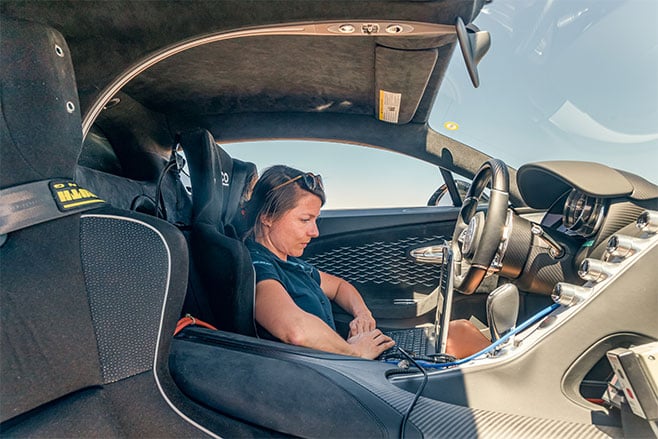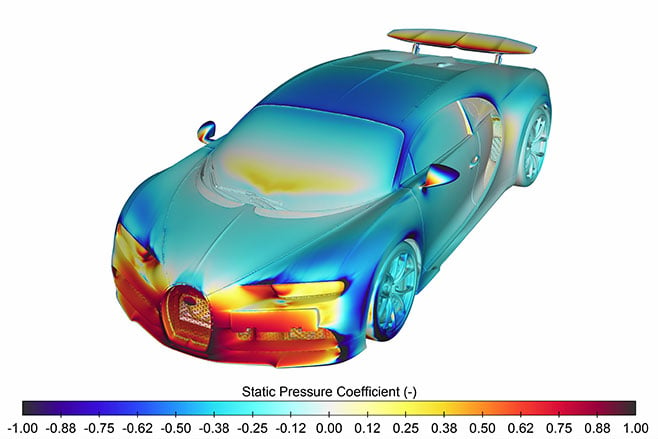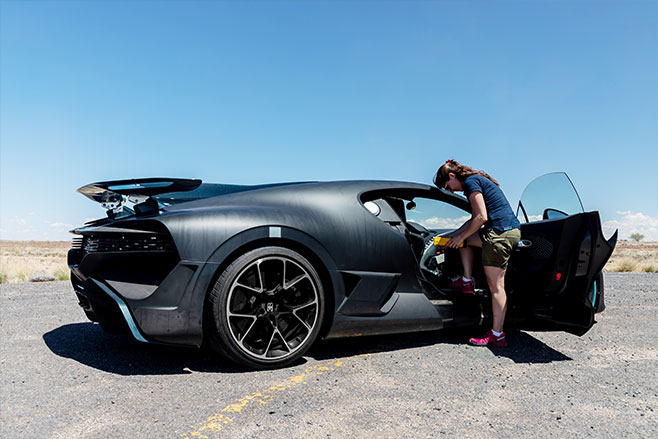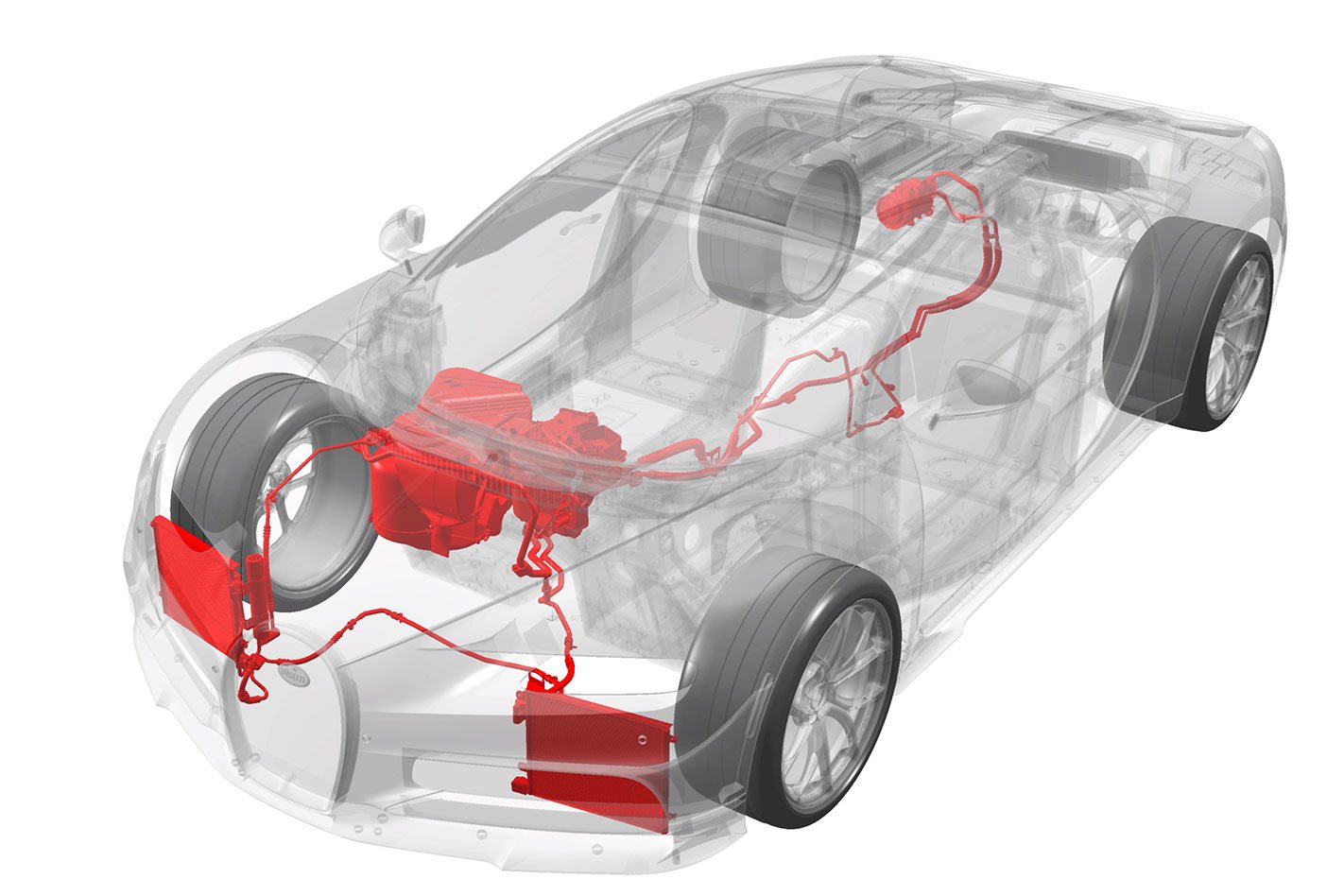Dr Julia Lemke has a very cool job. Her official title is the overall technical coordinator for the air conditioning systems in the Bugatti Chiron and its associated variants and we promise there will be no more puns in this article. You might think that designing an air conditioning system is a breeze (okay, sorry, that’s the last one, promise) but the task becomes somewhat more complex when the car involved is capable of well over 400km/h.
Lemke was a qualified historical archivist before going on to study energy and process engineering, writing her doctoral dissertation on “Energy assessment of car air conditions systems with secondary circuits”. This knowledge made Lemke the perfect candidate for solving the problem of keeping one of the world’s fastest cars cool.
Most vehicles draw air into the interior from the base of the windscreen, but in a Bugatti this area switches to negative pressure at 250km/h, meaning air would be sucked out rather than drawn in. To overcome this, a ram air flap and “optimised blower” ensures air continues to be forced into the interior.

The Chiron’s top speed potential creates further issues. Its aerodynamic needs demand a steeply raked windscreen – 21.5 degrees rather than around 30 degrees in a conventional car – which substantially increases the surface area from 0.7m-squared to 1.31m-squared. In turn, this heats up the interior more quickly thanks to the greater solar load, a problem only exacerbated by Bugatti’s Sky View glass roof option.
In true Bugatti fashion, to combat this there are some improbable numbers. There are two air-conditioning condensers, 9.5m of lines and a 10kW air-conditioning compressor capable of compressing around three kilograms of coolant per minute from a pressure of 2bar to 30bar. Bugatti claims this system would be sufficient to cool an 80m-squared European apartment.
The compressor is mounted on the engine in close proximity to the exhaust, so requires its own cooling system. More recently, the system had to be re-evaluated for the Chiron Pur Sport, for which Lemke is the interior coordinator, due to its higher 6900rpm rev limit. “Due to the increased engine speed in the Chiron Pur Sport, the main focus is on the proper functioning of the air conditioning compressor as an engine peripheral. This is why I take part in a lot of test drives to ensure the functionality of my system in all climatic conditions,” explains Lemke. Thrashing hypercars in the name of science – what a job.

Two test vehicles were made available for climate trials during the development of the Chiron. While 3D simulation was used to assess the airflow, Lemke also resorts to a decidedly low-tech method of measuring the aerodynamics on this high-tech hypercar. Wool threads are attached to clearly indicate airflow, their super light weight particularly helpful in identifying draughts. “There mustn’t be any draughts,” says Lemke, “The air conditioning system is working best when occupants don’t notice it. We have to make sure there are no draughts or noise – only then does it make you feel comfortable.”
Further complicating matters is the fact that different nationalities have distinct preferences for their ideal temperature. According to Bugatti, Europeans feel comfortable at 21-22 degrees, whereas most Americans prefer it a few degrees colder. “For us, it’s important to ensure that the selected temperature is quickly established,” says Lemke.
Lemke’s work is a reminder of the incredible level of detail required to produce any car, let alone one capable of such extreme performance. After all, the owner of a Bugatti Chiron might travel 400km/h once or twice in the car’s life, whereas they will use the air conditioning every time they drive.

Four fast and cool (ha) facts
1. Constant R&D
Dr Lemke conducts continuous research and development into not only increasing the outright performance of the air conditioning system but also its efficiency in order to minimise the use of refrigerants and energy.
2. Complex Demands
One of the greatest challenges with the Chiron’s air-conditioning is not just making sure it works perfectly, but that it works perfectly at all speeds and under any engine load, for those parameters are much wider than in most conventional production cars.
3. Heat Exchangers Aplenty
The Chiron’s cooling system is enormously complex, consisting of 10 radiators with three for the engine water, one for the charge air, two for the intercoolers and individual coolers for the engine, transmission, differential and hydraulic oil.
4. Tight Fit
Possibly the Chiron’s most amazing feature is its packaging, with a monster 8.0-litre, quad-turbo W16 engine, all-wheel drive, 10 radiators, passengers and luggage space squeezed into a car that is only a couple of centimetres longer than a Porsche 911.






